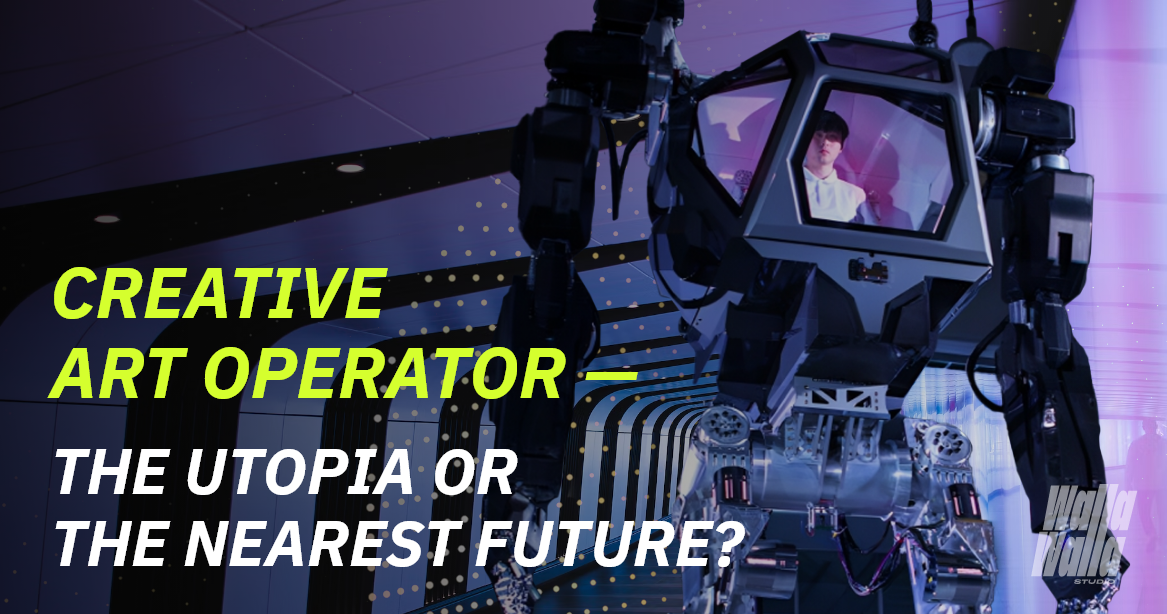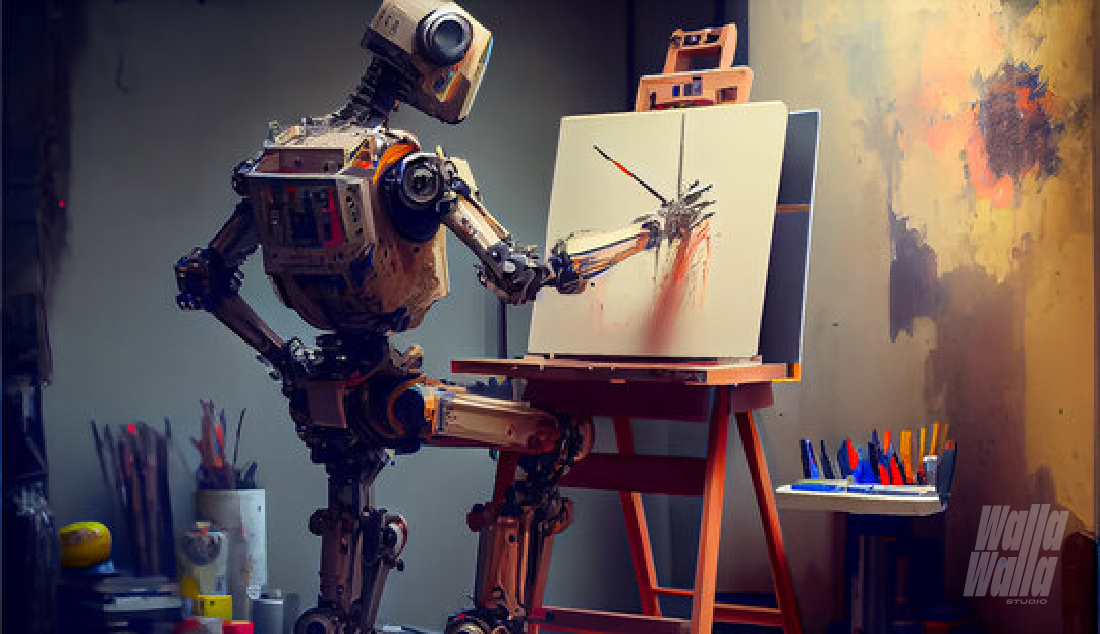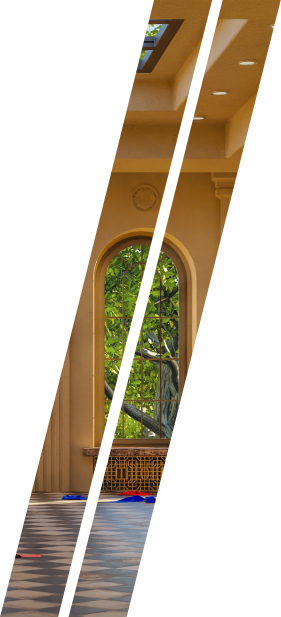 Search
Search

Over the past year, there has been much discussion about artificial intelligence, its development paths, and its impact on our future. Even more prevalent are the concerns that AI might replace humans in many industries, including creative professions.
Do we share these fears in Walla Walla Studio? Our thoughts lean in a much more positive direction. AI won’t replace humans; instead, it will pave the way for new professions to manage it, leading to leaps in efficiency and the quality of creative products.
In this article, we project a vision of the near future, discussing a new creative profession in the game industry. Let’s delve together into the possibilities that AI is unlocking, creating opportunities for collaboration and innovation like never before.

The Evolution of Creative Roles
Art has always been a medium for human expression and storytelling. From cave paintings to Renaissance masterpieces, creativity has been at the core of our cultural evolution.
However, the integration of the latest new technology into the digital art world has been a transformative journey. Augmented reality, virtual reality, and artificial intelligence are reshaping the landscape of creative expression. The game industry now ranks among the top 10 sectors with the highest utilization of artificial intelligence. So, game artists now have tools to turn their visions into immersive experiences, breaking the boundaries of traditional art forms.
Creative Art Operator (CAO) – Who Is It?
In this transformative era, the concept of the Creative Art Operator emerges as a bridge between human creativity and technological innovation. This hypothetical role envisions a professional who not only possesses artistic flair but also has a deep understanding of cutting-edge technologies. The Creative Art Operator is a pioneer, seamlessly navigating between the realms of imagination and code.
Utopia or Reality
The Creative Art Operator (CAO), once considered utopian, is undeniably becoming a reality in the dynamic landscape of game development and game art production. With the rapid advancements in artificial intelligence and its integration into creative workflows, the idea of a professional who orchestrates the synergy between human creativity and AI capabilities is no longer confined to dreams.
We witness the emergence of roles where individuals adeptly navigate sophisticated AI tools, expediting creative processes without compromising artistic integrity. If you are now working on variants of game art concepts using Midjourney or creating textures for them with Stable Diffusion, you’re stepping closer to becoming a CAO!
As industries embrace the potential of this harmonious collaboration, the Creative Art Operator is evolving from a visionary concept into a tangible reality, shaping the future of creative professions and redefining how art is approached and produced in the digital age.
The Skill Set of a Creative Art Operator
To understand the plausibility of the Creative Art Operator, let’s delve into the required skill set. This role will demand a hybrid skill set that combines traditional artistic skills with technical prowess:
- proficiency in graphic design, animation, and 3D modeling is crucial,
- a deep understanding of programming languages, artificial intelligence, and immersive technologies,
such as Unity ML-Agents (a toolkit that integrates machine learning algorithms with the Unity game engine), CUDA and cuDNN (for performance optimization), JavaScript (for WebGL), GANs (Generative Adversarial Networks), and AI-driven tools.
The ability to adapt and learn new technologies is a valuable trait for CAOs in the rapidly evolving field of game production with AI integration.

The Role in Practice
In game development studios, a Creative Art Operator (CAO) role will be dynamic and pivotal. CAOs will serve as the linchpin between human creativity and cutting-edge AI technologies. They will actively collaborate with artists, game designers, and developers, leveraging their technical expertise to integrate AI tools seamlessly into the artistic workflow.
Creative Art Operator’s practical tasks in game studio may include:
- implementing AI algorithms for rapid prototyping,
- generating diverse game assets,
- ensuring ethical considerations in AI-generated content.
CAOs will play a leadership role in fostering innovation, pushing the boundaries of artistic expression through the strategic use of AI. Their practical experience needs to involve constant learning, problem-solving, and staying at the forefront of AI advancements.
In essence, CAOs will contribute significantly to the synthesis of creativity and technology, shaping the visual landscape and narrative depth of games in the ever-evolving world of game development.
Challenges and Ethical Considerations
As we tread into this uncharted territory, challenges and ethical considerations come to the forefront. The reliance on technology raises questions about the authenticity of art and the potential homogenization of creative expression. Can a machine truly capture the nuances of human emotion and individuality?
Moreover, the ethical use of AI in game art creation poses concerns about intellectual property, as algorithms generate content based on vast datasets. Striking a balance between the capabilities of technology and the ethical considerations of artistic creation will be paramount in the evolution of the Creative Art Operator.
Case Studies in Creative Art Operation
While the concept of the Creative Art Operator is speculative, certain projects and collaborations provide glimpses into its potential. For example, AI-generated art has gained attention in recent years, with works created by algorithms being auctioned for significant amounts. Collaborations between artists and engineers in the creation of immersive experiences showcase the power of combining artistic intuition with technical expertise.

The Impact on the Game Industry
So, what’s the Creative Art Operator’s superpower? A deep understanding of AI algorithms, enabling lightning-fast generation of diverse, top-notch assets. From character prototypes to lush environmental details, ideas flow seamlessly. This speedy process fits perfectly with the lively pace of the gaming world, ensuring quicker turnarounds without sacrificing artistic charm.
But it’s not just about speed – the Creative Art Operator is the guardian of ethics and artistic essence in the industry. They make sure AI-generated content stays true to the intended narrative and visual identity, addressing worries about automation diluting the artistry.
In a nutshell, the future rise of Creative Art Operators (CAOs) will be a game-changer, blending human creativity with AI’s prowess. This dynamic duo unlocks unmatched efficiency, scalability, and creativity. As this profession evolves, get ready for a redefinition of industry norms, pushing the boundaries of what’s possible in crafting visually stunning and emotionally resonant gaming experiences. It’s not just a job; it’s a creative revolution.
Summing up
Each company in the gaming industry independently determines the extent to which AI technologies can optimize the game development process. However, the involvement of experienced art professionals with years of game development experience defines the key selling points of the game and its success. Just remember that a reliable strategic game development partner won’t ever be replaced by AI!


